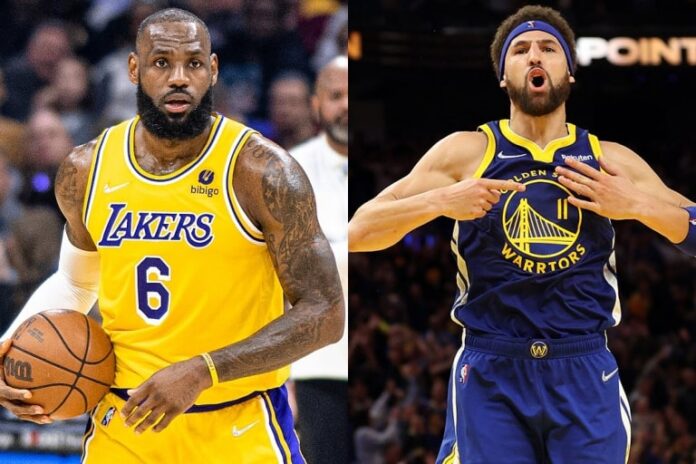In 2022-2023, 1.59 million viewers watched the NBA regular season in America. This was a slight decline in numbers from the previous season’s 1.61 million but an overall increase of 18% from 1.34 million viewers in 2020-21.
Focusing on the most recent season’s viewership, you may conclude that regular-season viewership is rising, but it is not. When taking a step back and looking over a more extensive data collection, the NBA has been on a rapid decline over the last couple of decades.
However, to fully understand the situation and how it affects various aspects of the league, you must consider a broader context. A quick way to judge the health of a sport is by taking a glance at its betting scene.
Many fans are unwilling to engage with the scores and odds, actively seeking to boycott until major improvements are made to the sport.
The NBA Regular Season Viewership Timeline
NBA regular season viewership has been disproportionately strong in two eras. The first, as you might’ve guessed, is the Michael Jordan era in Chicago, from 1994 to 1999.
During Jordan’s impressive 3-peat repeat run from 1993 to 1998, the average regular-season viewership was 2.725 million viewers per season.
Ironically, the most watched regular season is the 1998-99 lockout season. It had 50 games only, and it was right after Jordan retired, but it was watched by 3.1 million Americans.
The first significant drop in viewership came the following season. 2.1 million Americans watched the 1999-00 regular season – a one-million drop. The second considerable drop came when the NBA switched from TBS and NBC to ESPN and ABC.
Viewership dropped 23%, from 2.06 million in the 2001-02 regular season to 1.5 million in the 2002-03 regular season, and has never recovered.
Since then, regular season viewership has reached two million only three times – the first three seasons of Lebron James in Miami.
LeBron’s first year, regular-season viewership increased from 1.85 million to 2.51 million, a whopping 35% increase.
It remained at a high of 2.51 until dropping slightly in 2013 to 2.17 million, but since then, no regular season has come close to those numbers.
Least-watched Regular Seasons
The six least-watched regular seasons of the past three decades are:
- 2020-21 (1.36 million)
- 2006-07 (1.52 million)
- 2019-20 (1.55 million)
- 2002-03 (1.58 million)
- 2022-23 (1.59 million)
- 2021-22 (1.61 million)
The last four regular seasons are among the six least watched. One can argue that COVID changed things, but looking at the NBA regular season viewership we’ve discussed here, it’s clear that regular season viewership isn’t just down; it’s tanking and has been for a while. Why is that?
Factors Contributing to the NBA’s Declining Viewership
The declining regular season viewership can be attributed to a wide combination of factors, including:
Missing Stars
For various reasons, NBA stars, save for a few, tend to miss entire seasons – or significant parts. Some, like Thompson, can’t play due to injuries, some, like Irving, are out for “personal reasons,” and others miss games due to “load management,” as it’s known. Kawhi is notorious for this.
Jaylen Brown of the Celtics recently stated the 65-game requirement to become an MVP candidate was too high and proposed lowering it to around 58.
Imagine being expected to show up to work only 80% of the time – it’s no wonder NBA fans are becoming disenchanted when even the game’s top players don’t feel interested enough to put in the mileage for the most prestigious titles, even with the incentive of a $20million-a-year contract.
The Cable Theory
According to Adam Silver, the NBA Commissioner, the decline of cable has had a disproportionate impact on the NBA.
Cable subscriptions have been on an unsurprising sharp decline since the 90s. People are increasingly unwilling to pay exorbitant fees to hook an antenna to their TV to watch an ad-infested choice of channels.
So, like everyone else, sports fans have turned to the flexibility and depth of streaming services.
Lack of Parity
Unless a team has more than a few superstars, it has little chance of winning the NBA Championship.
The idea of superteams seems recent, and many believe they started when James, Bosh, and Wade teamed up in Miami, but they have been around since 1968 when Wilt Chamberlain joined Jerry West and Elgin Baylor in the Lakers.
They have had the same effect since then, in creating an uneven playing field. Competing for a championship is much harder for teams without multiple superstars.
Why would a fan invest in a team, financially or emotionally, if he knows it will be virtually eliminated from championship contention on opening night?
But that doesn’t necessarily mean creating a superteam guarantee winning the championship. That is why analyzing a team’s past scores and odds is more effective than looking at the roster when predicting its performance.
Overexposure and Competition
There are over 2,000 regular-season NBA games, over 10,000 college basketball games, and an endless number of basketball talk shows.
Many of them are televised, so basketball fans are never lacking. There is always a game or a talk show to watch.
It can lead to viewer fatigue, which simply means they get tired of watching. It affects even die-hard basketball fans. But this is often temporary.
